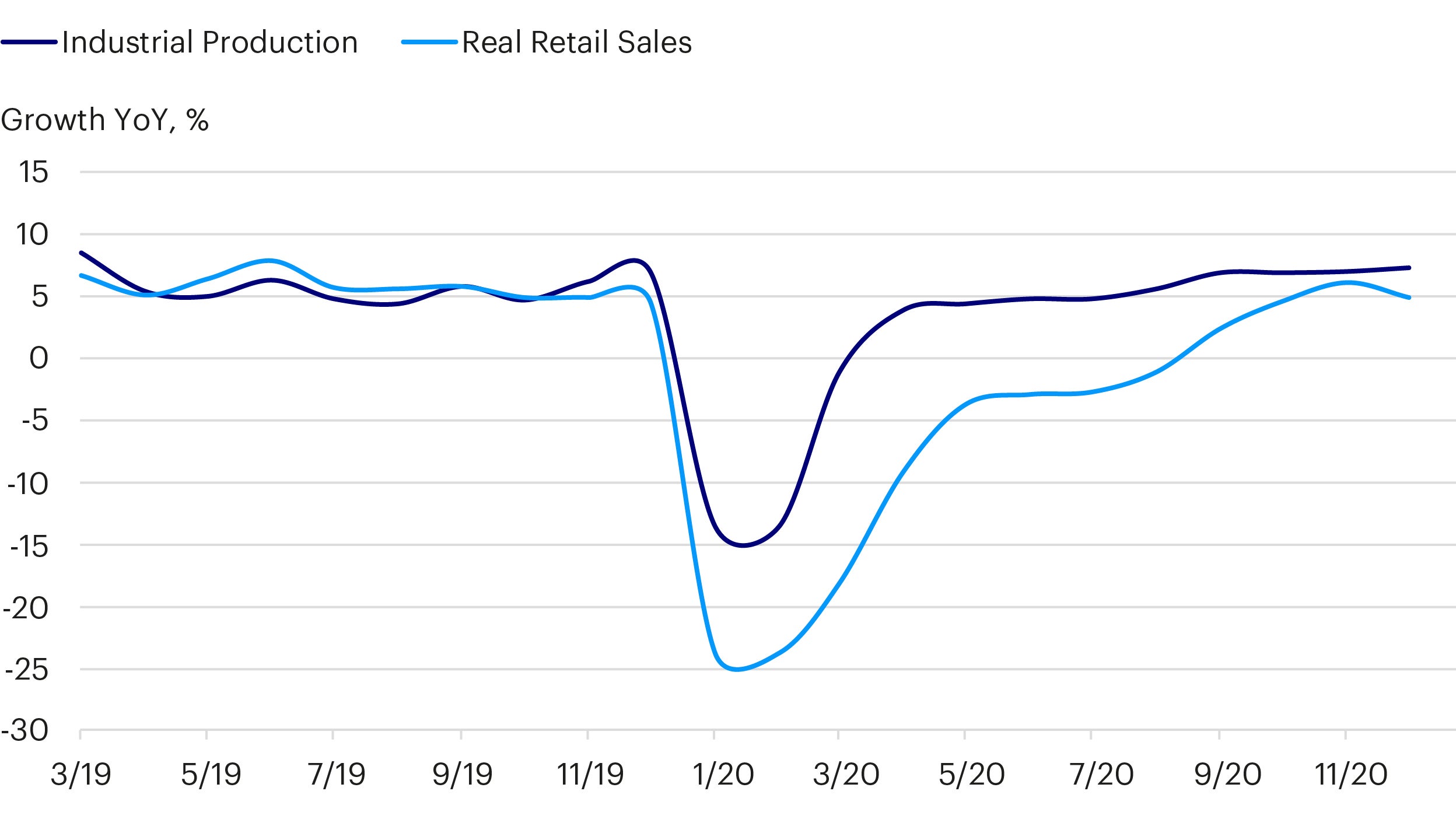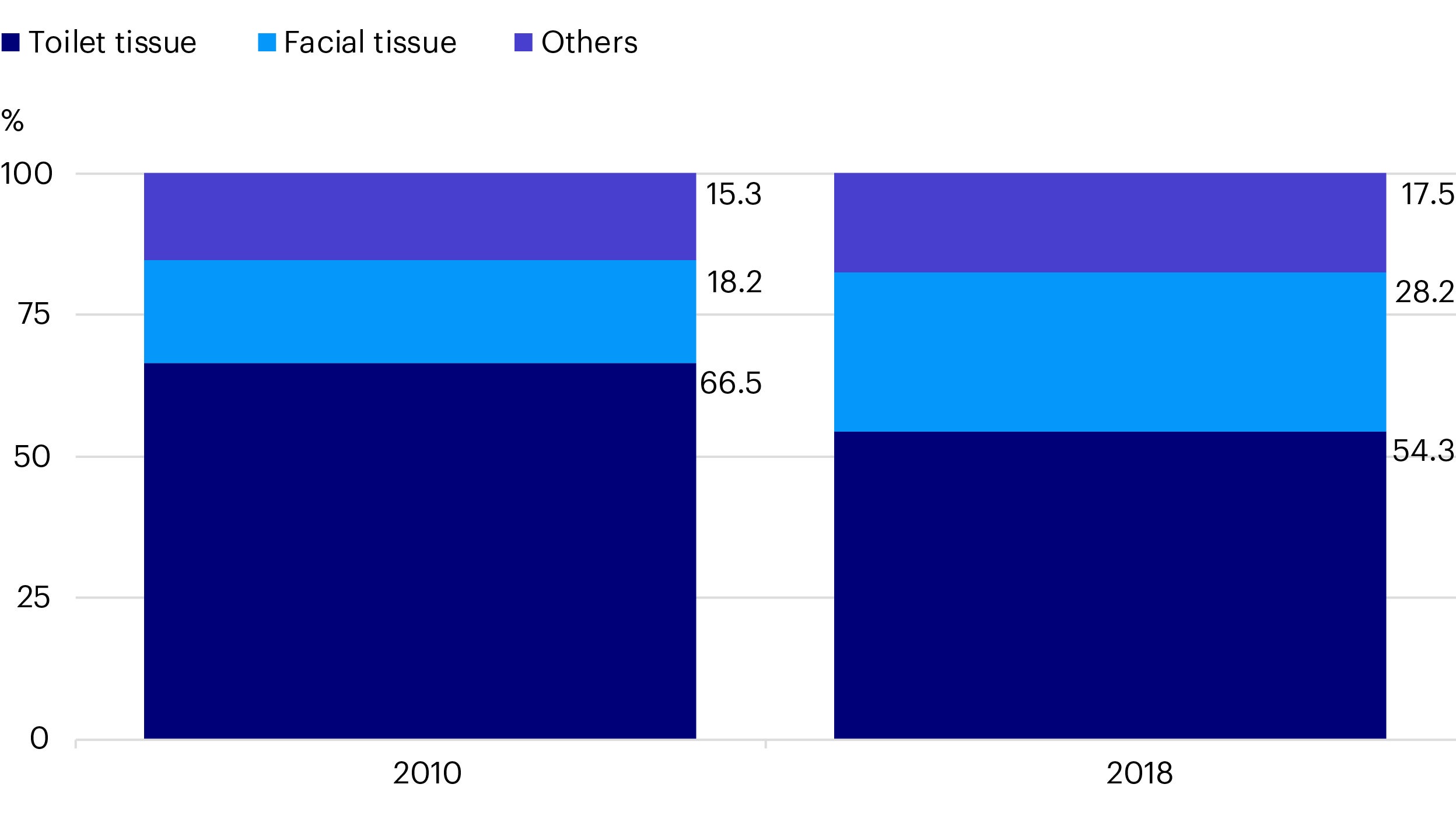
Markets and Economy Digitalisation is opening up new value-added opportunities
In China, the digital trend is very evident and is supported by increasing infrastructure spend.

China’s domestic sector has grown significantly and now constitutes a dominant share of GDP. The domestic economy has staged a recovery following the disruption caused by Covid-19 and remains resilient due to several factors.
Firstly, China has imposed strict control measures to contain the outbreak and we believe the government has demonstrated its capability to manage the situation. Secondly, policy support is evident with lending rates and banks’ reserve requirements being cut several times to enhance liquidity. At the same time, the budgetary fiscal deficit has increased and special Covid-19 government bonds have been issued to boost infrastructure spend and employment. As such, domestic sectors such as industrial production and retail sales have been improving since March 2020 (figure 1) and we expect them to gather momentum as economic activities normalises further.

The past few years have seen a rise in geopolitical tensions between the world’s two largest economies. We are closely monitoring the situation given the change in presidency in the US. We believe tensions between these two countries are unlikely to go away given their strategic rivalry. That said, we believe the new US administration might take a different approach while dealing with competition from China. We believe the risk of further market disruptive policies being introduced has declined.
We have positioned the strategy to capitalise on domestically focused companies, by selecting stocks benefiting from structural growth trends. We believe these stocks offer higher earnings visibility and growth, and will deliver sustained returns for investors. Our analysts on the ground have noticed a strong increase in consumers’ wealth which is driving up overall spend as well as demand for more high-end products. Since the latter can be sold at higher prices than lower-end products, some companies are improving their product offerings to meet this demand. This has led to our investment in a large tissue producer, a long term holding in the fund.
The company is moving its product mix towards mid-to-high end tissues and is doing so, within a growing market. The per capita tissue consumption in China has grown at a CAGR of 8% (2010-2018) versus global growth of 3%1. In particular, non-toilet tissues including facial tissues, as well as higher-end products have experienced rapid demand growth (CAGR of 13%) over the same period. Against this backdrop, the company has focused on facial tissues while continuing to launch higher quality toilet tissue products (figure 1). We believed that the company’s valuation did not fully reflect its potential to deliver double-digit organic sales growth while maintaining a healthy margin, as it continued to position its business to benefit from this strong premiumisation trend.


In China, the digital trend is very evident and is supported by increasing infrastructure spend.

Our investment strategy favours private enterprises. They are highly competitive and innovative, constantly utilising new technologies to deliver market leading products and services.